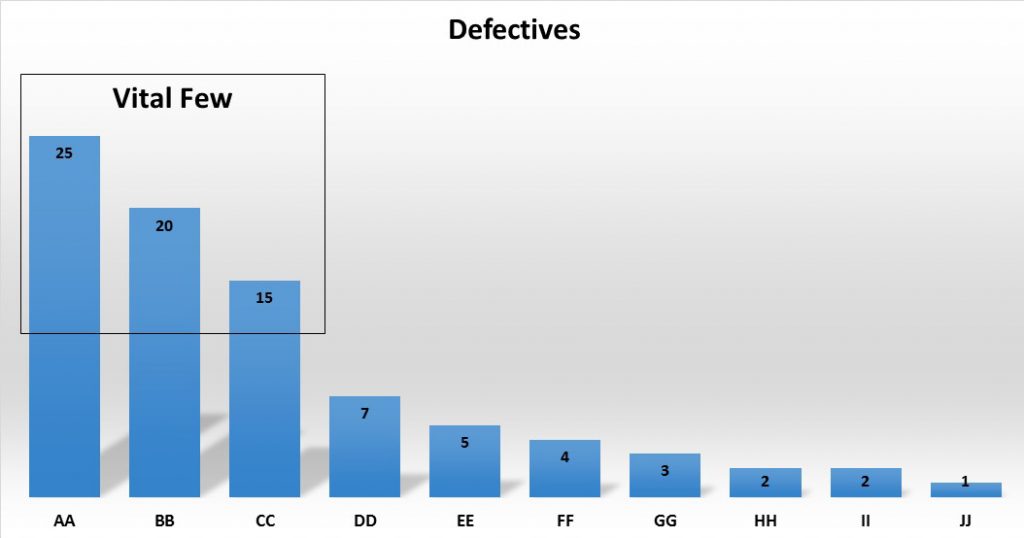Cause and Effect Diagram and Pareto Analysis

Cause and Effect diagram and Pareto analysis are two of the seven basic QC tools. When both these tools are used together, they provide a complete picture of a problem. Cause and Effect Diagram Cause and Effect Diagram is a technique for identifying the possible causes of an observed problem or effect and helps to trace/identify the root cause of the problem for removing them. This is also called Fish Bone diagram (or) Ishikawa Diagram. It is a simple but powerful tool for getting to the bottom of the problem.
It can be used to:
Steps to create the Fish Bone diagram
Pareto analysis According to Pareto analysis,80 % of the problems are caused due to 20% of the causes. Hence if we focus on the vital few causes, the majority of the problem can be solved. It saves precious time in solving a problem. This is a universal philosophy and can be applied anywhere. Example:

Application of the tools Considers a situation where an improvement team is focusing to reduce the poor quality rejection of a part. The team can apply the cause and effect diagram and Pareto analysis using the following steps,
Contact us for a consultation on how Hash LLP can help your business with Lean Manufacturing.
+91 9176613965

Join 3000+ Professionals who receive our Weekly Newsletter containing Simple and Practical ideas to help achieve Results in their companies.
Hash Management Services LLP, 2023 © All Rights Reserved